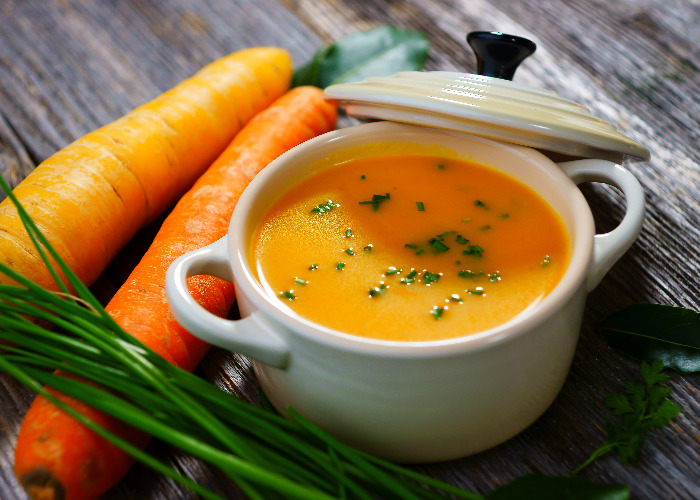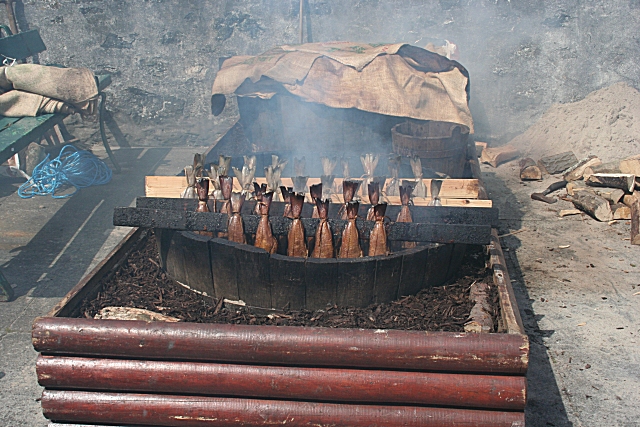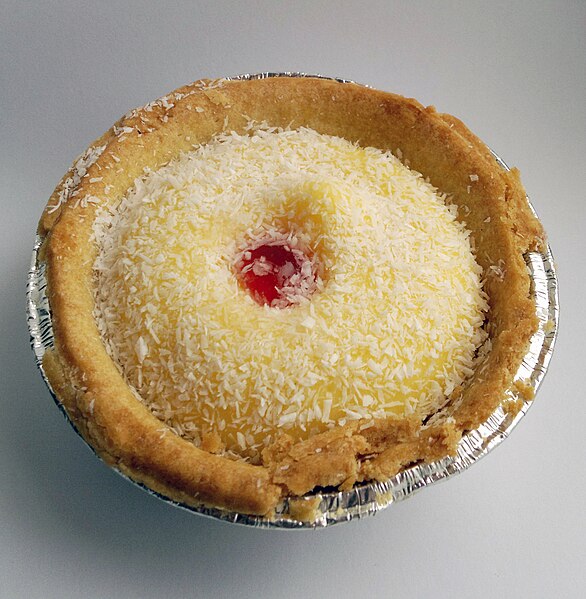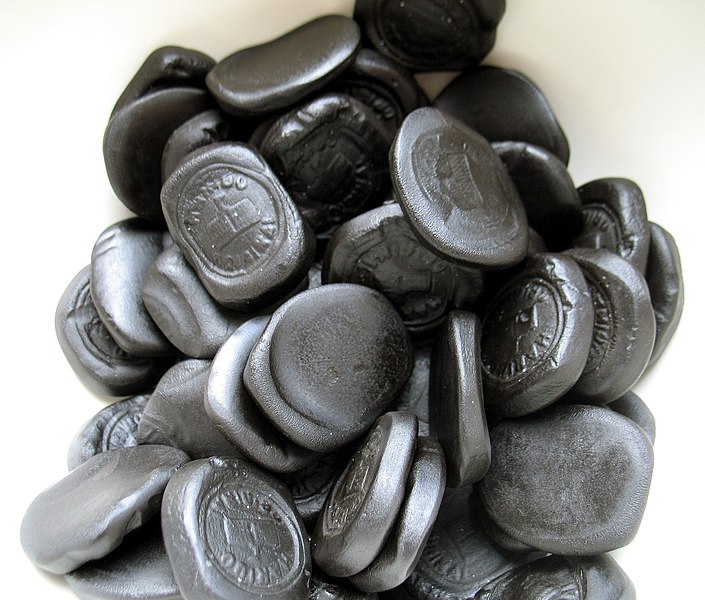Ten tasty treats named after the towns they come from

Are you lucky enough to live in a town which has its very own cake, pie, cheese, fish, or even soup named after it? We take a look at ten delicacies named after the place they originate from.
Arbroath Smokies
 A type of smoked haddock which was invented, as the legend goes, in the small Scottish fishing village of Auchmithie, three miles northeast of Arboath. Apparently a shop caught fire there one night, ‘cooking’ barrels of haddock preserved in salt as it spread … next morning, the locals discovered that the ‘ruined’ haddock was in fact very tasty. It’s a nice story, but it’s far likelier that the villagers were descended from Scandinavians, where fish is smoked in a very similar way.
A type of smoked haddock which was invented, as the legend goes, in the small Scottish fishing village of Auchmithie, three miles northeast of Arboath. Apparently a shop caught fire there one night, ‘cooking’ barrels of haddock preserved in salt as it spread … next morning, the locals discovered that the ‘ruined’ haddock was in fact very tasty. It’s a nice story, but it’s far likelier that the villagers were descended from Scandinavians, where fish is smoked in a very similar way.
Smokies are still exclusively produced in the region today, and Iain R. Spink is leading the way – he’s often extolled the virtues of Smokies on TV shows such as Jamie’s Great Britain and Rick Stein’s Food Heroes, and his Smokies were named one of the top 50 foods in the UK last year. You can order Arbroath Smokies from Iain online.
Banbury Cake
 Not to be confused with an Eccles Cake, which came decades after, a Banbury Cake is a currant-filled spiced flat pastry cake more oval in shape than round. They used to be made and sold exclusively in Banbury, Oxfordshire, and the recipe dates back to the mid-sixteenth century at least. Apparently it was Edward Welchman who made the first batch at his shops on Parsons Street, but the recipe has been adapted a fair bit since then and can now include everything from rum to rose water, nutmeg and mixed peel.
Not to be confused with an Eccles Cake, which came decades after, a Banbury Cake is a currant-filled spiced flat pastry cake more oval in shape than round. They used to be made and sold exclusively in Banbury, Oxfordshire, and the recipe dates back to the mid-sixteenth century at least. Apparently it was Edward Welchman who made the first batch at his shops on Parsons Street, but the recipe has been adapted a fair bit since then and can now include everything from rum to rose water, nutmeg and mixed peel.
Caerphilly Cheese
 Caerphilly is a crumbly, white, cow’s milk cheese originating from the Welsh town of the same name. Apparently, the cheese was not invented in Caerphilly; only sold at a market there for the first time. It’s pretty salty and was developed over time to be so, in order to stock the coal miners of the area up with the salt they lost over the course of a hard day’s work.
Caerphilly is a crumbly, white, cow’s milk cheese originating from the Welsh town of the same name. Apparently, the cheese was not invented in Caerphilly; only sold at a market there for the first time. It’s pretty salty and was developed over time to be so, in order to stock the coal miners of the area up with the salt they lost over the course of a hard day’s work.
Original Caerphilly is dry in the middle and creamy around the edges – but its production was halted during World War II, as all the nation’s milk was sent to the Cheddar factories to help with the war effort. After the war, the same cheddar factories started making their own Caerphilly, creating a dry and crumbly texture. The latter is mostly how it’s known today.
Cullen Skink

The soup originates from the town of Cullen in Moray, on the north east coast of Scotland, and is fairly similar in taste and texture to American chowder, although it is smokier. ‘Skink’ is a Scots word for a shin, knuckle or hough of beef, all of which were used to make soup – hence the word ‘skink’ eventually ended up meaning ‘soup’.
It’s still often served in restaurants throughout Scotland, and it’s the perfect soup for chilly winter nights.
Bath Oliver biscuit
 You’ve very likely had one of these with cheese before. A Bath Oliver is a hard, savoury biscuit made from flour, butter, yeast and milk and it was invented by physician William Oliver of Bath, Somerset around 1750. Apparently Mr Oliver bequeathed his coachman, Mr Atkins, the recipe upon his deathbed, together with £100 and ten sacks of wheat flour to get started – it made Atkins a very rich man.
You’ve very likely had one of these with cheese before. A Bath Oliver is a hard, savoury biscuit made from flour, butter, yeast and milk and it was invented by physician William Oliver of Bath, Somerset around 1750. Apparently Mr Oliver bequeathed his coachman, Mr Atkins, the recipe upon his deathbed, together with £100 and ten sacks of wheat flour to get started – it made Atkins a very rich man.
The Bath Oliver business was passed from company to company, and the biscuits are now made by James Fortt – you can buy them in Waitrose. Apparently they go well with wine as well as cheese.
Chorley Cake
 Is it a Banbury Cake, is it an Eccles Cake? No, it’s a Chorley Cake! Again, these sweet treats are puck-shaped and fruit-filled, but this time they originate from Chorley in Lancashire. Chorley Cakes (or ‘Fly Pie’, as the locals call it) aren’t as sweet as Eccles Cakes and they are commonly eaten with butter on top, and a slice of Lancashire cheese on the side. The pastry is shortcrust, and the only fruit in there is currants.
Is it a Banbury Cake, is it an Eccles Cake? No, it’s a Chorley Cake! Again, these sweet treats are puck-shaped and fruit-filled, but this time they originate from Chorley in Lancashire. Chorley Cakes (or ‘Fly Pie’, as the locals call it) aren’t as sweet as Eccles Cakes and they are commonly eaten with butter on top, and a slice of Lancashire cheese on the side. The pastry is shortcrust, and the only fruit in there is currants.
The cake is still celebrated today, and every October the town hosts a ‘Chorley Cake Street Fair’ to promote the Chorley Cake, with a competition for local bakers to produce the largest one.
Kendal Mint Cake
 An absolute must for climbers, hikers and mountaineers, Kendal Mint Cake originates from Kendal in Cumbria and is mainly consumed because of its high energy content. Three Kendal-based companies still produce Kendal Mint Cake, including Quiggin’s –the oldest surviving mint cake company - , which was set up in 1880.
An absolute must for climbers, hikers and mountaineers, Kendal Mint Cake originates from Kendal in Cumbria and is mainly consumed because of its high energy content. Three Kendal-based companies still produce Kendal Mint Cake, including Quiggin’s –the oldest surviving mint cake company - , which was set up in 1880.
All three companies (Quiggin’s, Wilson’s and Romney’s) base their mint cake on the traditional recipe – sugar, glucose, water and peppermint oil. Although the exact recipe and way of manufacturing Mint Cake is a secret, we know that the basic process involves boiling the four ingredients together; continuously stirring it; then pouring it into moulds and allowing it to set. Mint Cake can be made with either white or brown sugar, and some bars come slathered in chocolate.
Liverpool Tart

The recipe dates back to the late 1890s and the distinctive taste comes from the mixture of ‘moist sugar’ (which could have referred to dark muscovado sugar) and a minced boiled lemon. It wasn’t until this millennium that the tart became popular – by 2008 it was being produced as a regular line by two bakeries in Merseyside, including Satterthwaites in Crosby.
Manchester Tart
 A Manchester Tart looks a bit like a cross between a Bakewell Tart and a Lamington. It sports a shortcrust pastry shell and comes filled with jam and custard, with coconut shavings and a maraschino cherry to decorate. It was often on the dinner menu at schools in Manchester until the mid-1980s, and is apparently a variation on an earlier recipe, the Manchester Pudding, writen by Victorian cookery writer Mrs Beeton.
A Manchester Tart looks a bit like a cross between a Bakewell Tart and a Lamington. It sports a shortcrust pastry shell and comes filled with jam and custard, with coconut shavings and a maraschino cherry to decorate. It was often on the dinner menu at schools in Manchester until the mid-1980s, and is apparently a variation on an earlier recipe, the Manchester Pudding, writen by Victorian cookery writer Mrs Beeton.
The tarts are still made in Manchester, and the award-winning Manchester Tart Company (set up by mother-and-daughter team Ann and Claire) still uses the Beeton recipe as its basis.
Pontefract Cakes
 Not ‘cakes’ at all, these sweet treats are in fact circular black sweets made of liquorice. They were first called ‘Pomfret’ cakes after the old Norman word for the Yorkshire town of Pontefract, and used to come embossed by hand with a stamp of Pontefract Castle – the workers who did that were called ‘cakers’. Be careful how many you eat, though – in 2004 a Yorkshire woman was admitted to hospital with muscle failure after eating too many of them.
Not ‘cakes’ at all, these sweet treats are in fact circular black sweets made of liquorice. They were first called ‘Pomfret’ cakes after the old Norman word for the Yorkshire town of Pontefract, and used to come embossed by hand with a stamp of Pontefract Castle – the workers who did that were called ‘cakers’. Be careful how many you eat, though – in 2004 a Yorkshire woman was admitted to hospital with muscle failure after eating too many of them.
The basic recipe for original Pontefract Cakes involves cleaning, grinding and boiling liquorice roots; adding sugar and a thickening agent; drying and cooling for a week; squashing the blocks into long strands; and then punching out small rounds topped with the traditional Pontefract Cake stamp.
There are, of course, plenty more examples we could cite – we’ve already written about the wonder that is Bakewell Pudding, and we’re big fans of Melton Mowbray Pork Pies, too. Do you know of any other local delicacies worthy of mention? Talk to us in the comments box below.
Smokies image courtesy of Anne Burgess; Banbury Cake image from Redrose64; Cullen Skink image from Metukkalihis; Bath Olivier biscuit image from Richard Wheeler; Chorley Cake image from Dr Greg; Kendal Mint Cake image from Geni; Manchester Tart image from Jamesjones79.
You might also like
Comments
Be the first to comment
Do you want to comment on this article? You need to be signed in for this feature